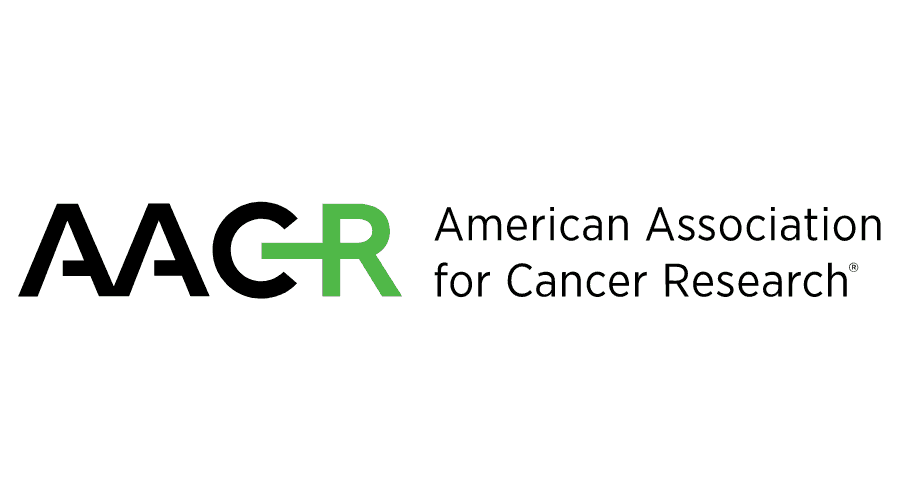News
Article
Daratumumab Quadruplets Show Durable Outcomes in Transplant-Eligible Multiple Myeloma
Author(s):
Daratumumab plus VRd and frontline daratumumab plus VTd produced deep, durable responses in patients with transplant-eligible multiple myeloma in updates to the PERSEUS and CASSIOPEIA trials, respectively.
Two quadruplet regimens for transplant-eligible newly diagnosed multiple myeloma (NDMM)—daratumumab plus bortezomib, lenalidomide, and dexamethasone (D-VRd) and daratumumab plus bortezomib, thalidomide, and dexamethasone (D-VTd)—showed deep, durable responses in data presented at the 21st International Myeloma Society Annual Meeting & Exposition, held September 25-28 in Rio De Janeiro, Brazil.1,2
Both analyses support the use of their respective regimens as new standards of care in transplant-eligible NDMM.
Frontline d-VRd and frontline d-VTd produced deep, durable responses in patients with transplant-eligible multiple myeloma. | Image credit: Катерина Євтехова - stock.adobe.com

Assessing Cytogenetic Risk Subgroups in PERSEUS
In a cytogenetic risk analysis of the PERSEUS trial (NCT03710603), D-VRd induction/consolidation therapy and daratumumab plus lenalidomide (D-R) maintenance led to higher rates of deep, durable responses and improved progression-free survival (PFS) in all cytogenetic risk groups compared with VRd induction/consolidation and R maintenance.1
In the PERSEUS trial, patients who received D-VRd induction/consolidation therapy and D-R maintenance had longer PFS, as well as improved rates of minimal residual disease (MRD) and sustained MRD negativity. The expanded analysis assessed high-risk cytogenetic subgroups, including patients with gain(1q21) and amp(1q21).
A total of 709 patients with treatment-eligible NDMM were randomized to receive either induction/consolidation D-VRd (n = 355) or VRd (n = 354). FISH testing determined cytogenetic risk, with high risk defined as the presence of at least 1 high-risk cytogenetic abnormality (HRCA), including del(17p), t(4;14), or t(14;16). Patients with revised high risk also had at least 1 HRCA, but these included del(17p), t(4;14), t(14;16), gain(1q21), amp(1q21).
"I would like to start by highlighting the excellent outcomes of patients with standard-risk cytogenetics when treated with D-VRd and D-R maintenance," lead investigator Meletios Dimopoulos, MD, said in a presentation of the data. "I think this is the best curve that we have ever seen in the management of newly diagnosed, symptomatic patients with multiple myeloma."
At a median follow-up of 47.5 months, all cytogenetic subgroups showed improved PFS with D-VRd vs VRd alone. The rates of MRD negativity, defined as the percentage of patients in the intent-to-treat population who experienced a complete response or better and MRD negativity, were also higher with D-VRd and D-R maintenance across all cytogenetic subgroups:
- standard risk: 77.3% vs 48.1%; P < .0001
- high risk: 68.4% vs 47.4%; P =.0086
- revised standard risk: 75.3% vs 47.3%; P < .000
- revised high risk: 73.1% vs 49.3%; P < .0001
- gain(1q21): 69.5% vs 46.5%; P = .0086
- amp(1q21): 85.7% vs 55.6%; P = .0104
- 1 HRCA: 75.3% vs 50.0%; P = .0002
- 2 or more HRCAs: 66.7% vs 47.4%; P = .1044
Similar trends were seen when examining sustained MRD negativity for at least 12 months with D-VRd vs VRd:
- standard risk: 69.3% vs 31.2%; P < .0001
- high risk: 48.7% vs 25.6%; P = .0032
- revised standard risk: 66.1% vs 31.7%; P < .0001
- revised high risk: 59.2% vs 27.7%; P < .0001
- gain(1q21): 62.7% vs 29.6%; P = .0002
- amp(1q21): 71.4% vs 27.8%; P = .0006
- 1 HRCA: 61.9% vs 28.2%; P < 0.0001
- 2 or more HRCAs: 51.5% vs 26.3%; P = .0303
"The addition of daratumumab to VRd induction/consolidation and maintenance with lenalidomide resulted in a favorable PFS benefit and induced higher rates of deep and sustained MRD negativity, regardless of R2-ISS disease stage and across all cytogenetic subgroups, including patients with revised high risk and patients with high-risk gain of 1q and amplification of 1q," Dimopoulos said, "and the PERSEUS regimen demonstrates improved MRD negativity and PFS outcomes in patients with high-risk cytogenetics and abnormalities of 1q."
Dimopoulos again emphasized the excellent outcomes seen with this therapy approach for patients with standard-risk NDMM.
“These data support what we already know—that the inclusion of daratumumab in the frontline, consolidation, and maintenance phase represents a new and excellent standard of care for the management of newly diagnosed patients with multiple myeloma who will receive high-dose therapy," Dimopoulos concluded.
Examining Long-Term MRD in CASSIOPEIA
An updated MRD analysis of the CASSIOPEIA trial (NCT02541383) presented by lead author Jill Corre, PharmD, PhD, demonstrated deeper and more durable MRD negativity outcomes among patients treated with D-VTd and daratumumab maintenance vs VTd, in addition to a PFS benefit regardless of MRD status with daratumumab maintenance therapy.2
"These data support the use of D-VTd induction/consolidation as a standard of care in transplant-eligible NDMM pts and demonstrate the additional benefit of daratumumab monotherapy use during maintenance for up to 2 years,” the authors wrote.
The trial included 2 parts: patients were initially randomized to either induction/consolidation D-VTd or VTd, then patients who experienced partial response or better after consolidation were randomized to either daratumumab maintenance every 8 weeks or observation for 2 years. All patients were assessed for MRD at the end of induction and consolidation and at 6, 12, and 24 months of maintenance. Those who had not progressed and were MRD negative at final assessment were followed at 1, 2, and 3 years.
After a median follow-up of 80.1 months, overall MRD negativity rates were higher among those receiving D-VTd compared with VTd alone at the postinduction (35% vs 23%; P < .0001) and postconsolidation (64% vs 44%; P < .0001) time points, with an MRD negativity threshold of multiparameter flow cytometry (MFC) of 10–5.
The overall MRD negativity rates during maintenance were higher with daratumumab vs observation in both the D-VTd and VTd cohorts. The rates based on MFC 10–5 were 77% with D-VTd and daratumumab vs 71% with D-VTd and observation (P = .0417), and rates based on a threshold of 10–6 with next-generation sequencing (NGS) were 61% vs 52% (P = .0365). In patients who received daratumumab maintenance vs observation following VTd, MRD negativity rates were 71% vs 51% based on MFC (P = .0001) and 48% vs 31% based on NGS (P < .0001).
Patients who were MRD negative after induction had better PFS outcomes, with a median PFS of 50 months in those who did not achieve MRD negativity vs median PFS not reached in MRD-negative patients. The 72-month PFS rate was 67.2% in MRD-negative patients, compared with 35% in MRD-positive patients.
Still, those who received D-VTd had significantly better PFS overall, regardless of MRD status. Similarly, patients who experienced MRD negativity after consolidation had better PFS, but maintenance therapy with daratumumab carried a PFS benefit regardless of MRD status following consolidation.
Notably, the highest rates of overall and sustained MRD negativity based on MFC and NGS were seen among patients who received D-VTd and daratumumab maintenance, and the rates in each induction/consolidation group were higher when patients received maintenance daratumumab vs observation.
Additionally, daratumumab improved the MRD negativity rate among both standard-risk and high risk patients, and PFS was improved with daratumumab regardless of cytogenetic risk status. However, Corre highlighted that high-risk patients treated with D-VTd had a median PFS of 48.5 months vs 87.3 months in the standard-risk group.
Surprisingly, Corre noted, in the maintenance population, the highest MRD negativity rates were seen with daratumumab in high-risk patients. She added that the results of the analysis are supportive of the more durable MRD negativity seen with D-R maintenance in the PERSEUS trial.
"Extended follow-up revealed the long-term MRD and PFS benefits of daratumumab maintenance after daratumumab-based induction," Corre concluded. "...Daratumumab-based induction/consolidation and maintenance resulted in the deepest and most durable MRD negativity, leading to superior PFS outcomes, including in patients with high-risk cytogenetic abnormalities."
References
1. Dimopoulos MA. Daratumumab (DARA)/bortezomib/lenalidomide/dexamethasone (D-VRd) with D-R maintenance (maint) in transplant-eligible (TE) newly diagnosed myeloma (NDMM): PERSEUS cytogenetic risk analysis. Presented at: 21st International Myeloma Society Annual Meeting & Exposition; September 25-28, 2024; Rio De Janeiro, Brazil. Abstract OA – 48.
2. Corre J. Daratumumab (DARA) + bortezomib/thalidomide/dexamethasone (D-VTd) and DARA maintenance in transplant-eligible newly diagnosed multiple myeloma (NDMM): CASSIOPEIA minimal residual disease (MRD) update. Presented at: 21st International Myeloma Society Annual Meeting & Exposition; September 25-28, 2024; Rio De Janeiro, Brazil. Abstract OA – 47.




